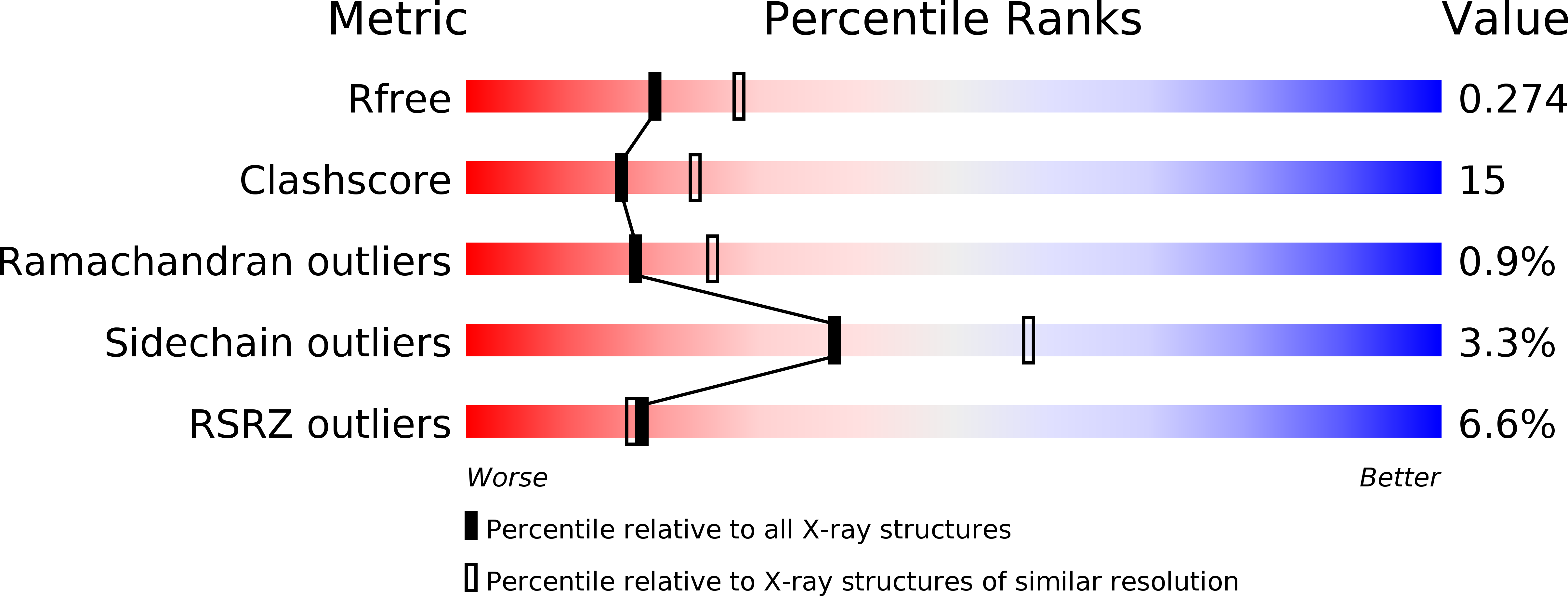
Deposition Date
2009-10-13
Release Date
2010-11-17
Last Version Date
2024-11-27
Entry Detail
PDB ID:
3K80
Keywords:
Title:
Structure of essential protein from Trypanosoma brucei
Biological Source:
Source Organism:
Lama glama (Taxon ID: 9844)
Trypanosoma brucei (Taxon ID: 5691)
Trypanosoma brucei (Taxon ID: 5691)
Host Organism:
Method Details:
Experimental Method:
Resolution:
2.40 Å
R-Value Free:
0.27
R-Value Work:
0.22
R-Value Observed:
0.22
Space Group:
C 1 2 1


